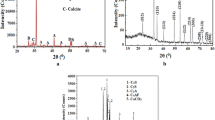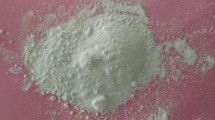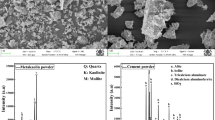Abstract
The development of modern cement and concrete industry calls for the improvement of the durability. By addition of a small amount of nano-particles nano structure of cement based materials can be modified and a higher durability can be achieved. In this paper, a review of the investigation of the effect of the frequently used nanoparticles, i.e., nano-silica, nano-clay and carbon nanotube on the durability of cement and concrete is presented. It is concluded that nanomodification of cementitious materials with nano-particle would make them durable through alteration of the physicochemical properties of the binder. Although intensive study on the usage of nano-silica has been conducted, more work is needed to get a better knowledge on the influencing mechanism. Surface-treatment of cementitous materials with nano-particles shows great potential for acquiring a durable concrete surface, and study on the selection of the treatment agent and treatment technique has been suggested. In addition, potential of using nano-clay in decreasing the transport property and the effect of carbon nanotube in optimizing the microstructure, as well as in decreasing the volume instability of cement-based materials are also discussed.
Access provided by Autonomous University of Puebla. Download conference paper PDF
Similar content being viewed by others
Keywords
1 Introduction
Since the last decades, with the invention of chemical agents used in concrete, especially the water-reducer, as well as the addition of pozzolans into cement-based materials, the quality of concrete mix has been greatly improved. It is generally agreed that a compact microstructure and an optimized composition/C-S-H gel structure are one of the key issue that govern the durability of a concrete structure. Considering the nano-scale feature of the C-S-H gel, researchers have been recently using nano-technology for the improvement of the durability [1–3].
In this paper, the influences of the most widely used nanoparticles in cement and concrete, i.e. nano-silica, nano-clay, carbon-nanotube on the durability of cement-based materials are reviewed. Effects of these nano-particles on the improvement of concrete durability are exhibited and the potential directions of further investigation are discussed.
2 Nano-silica Particle
Among all the nano-materials used in cement-based materials, nano-silica of different forms, for example, powder(nano silica), colloidal solution (colloidal nano silica) and even its precursor (tetraethoxysilane), have been investigated [4–10]. By exploring its effects on the hydration and hardening properties of cementitious materials, many researchers have reported the benefits that have been introduced, including the enhanced pozzolanic reactivity and the seeding effect.. Kong and his co-workers reported a greater Ca(OH)2-consuming capability of nano-silica as compared to that of silica fume. The current authors have reported one order of magnitude higher pozzolanic reaction rate of nano-silica particle than that of silica fume [11]. Singh recently reviewed the application of nano-silica in concrete [5], and his recently published paper quantitatively assessed the additional C-S-H gel formed by nano-silica hydration [12]. The alterations of the hydration and hardening processes of cementitious materials in the presence of nano-silica particle as revealed by various workers improve the durability of cementitious materials.
2.1 On the Early Age Properties of High-Volume Industrial By-Product Cementitious Materials
Using more industrial by-products, such as fly ash, in cementitious material has been considered desirable for making cement based materials more sustainable. Although great advantages such as low-carbon footprint, smaller hydration heat, greater strength gain at later ages and higher resistivity to the surrounding environment are acquired when fly ash is added into cementitious materials, the slow property gain at early ages such as prolonged setting time, low early-age mechanical property are considered to the major drawbacks [13]. By taking the advantages of the acceleration effect of nano-silica particles on the hydration of cement [14], various researchers have investigated the influences of nanosilica on high volume fly ash system (HVFA) [3, 15]. Hou et al. have measured the hydration heat of HVFA system after addition of nano-silica [3], as shown in Fig. 1. It can be seen that the slowed hydration processes of HVFA system, i.e. lower hydration temperature and slower hydration rate, are accelerated when 5 % colloidal nano-silica (CNS) is added. Acceleration effect of nano-silica is more apparently demonstrated in the setting time measurement: it can be seen in Fig. 1 that the initial and final setting time of HVFA system was greatly shortened, and the setting times of 40 % FA replacement system were comparable to that of plain cement paste [3].
Influences of nano-silica on the early age hydration of HVFA system [3]. (a) Hydration temperature (b) setting time measured by Vicat needle
Zhang and his co-authors studied the influence of nano-silica particle on the mechanical property development of high volume fly ash/pulverized blast furnace slag cementitious materials, whose results supported the great increase of the mechanical properties of the systems, especially at early ages [16, 17].
By analyzing the hydration extents of the pozzolans at various ages, Li [18] and Hou [3] have studied the influences of nano-particles on the pozzolanic reaction. Li reported an increased hydration degree of fly ash in the presence of nano-silica. Hou et al. showed that the increase was seen in the early age, but a reduced hydration degree was the result at later ages.
2.2 On the Gel Property
As a silicate material, the pozzolanic reaction of nano-silica with the hydration product of Ca(OH)2 forming additional C-S-H gel has often been ascribed to the benefits that nano-silica introduced into cement-based materials. Moreover, it has been reported that the alteration of the physicochemical properties of C-S-H gel contributed to the improvement of durability of cement-based materials. Gaitero and his co-authors investigated the calcium-leaching resistivity of nano-silica-added cement-based materials [6]. They observed that degradation due to accelerated calcium leaching was significantly less for nano-silica addition as compared to that by micro-silica addition. They reported that nano-silica particles increase the average length of the silicate chains of C-S-H gel. In addition, it was reported that addition of nanosilica modified the nano structure of C-S-H as measured by nano indentation (Fig. 2). Bosque studied the morphology of C-S-H gel after the addition of nano-silica particle into cement paste under different temperatures and their results suggested that C-S-H gel of longer average length of the silicate chains was achieved [20].
Elastic modulus of plain cement paste (CP) vs CP modified with nano-silica [19]
The current authors made an in-depth study of the hydration properties of nano-silica particles. SEM images (Fig. 3) showed that a compacter micro-structure (with a lower calcium to silica ratio) of the pozzolanic reaction products is formed when compared to that of silica fume, and this has been attributed to the improvement of the durability of cementitious materials. A compacter C-S-H gel structure formed by nano-silica particle has also been reported by Thomas [22] and Singh [12].
Morphology of pozzolanic hydration products of CNS and silica fume (CNS/SF:CH = 5:20; w/b = 2.0, 4 months old) [21]
Although nano-silica has been intensively used in cement and concrete, its reaction mechanism and the influence on C-S-H gel still need to be clarified.
2.3 On the Surface-Treatment
More recently, the high pozzolanic reactivity and its nano-sized feature of nano-silica has been used for the surface-treatment of hardened cementitious materials [7, 8, 23]. Due to its closeness to the environment, the surface of concrete structure exposed to the environment is the most vulnerable part and an improvement of the surface would be beneficial for the improvement of the durability. Cardenas and his coworkers investigated the influence of nano particle treatment on the properties of reinforced concrete, whose results supported that the quality of the surface concrete can be improved by nanoparticle-treatment through an electrokinetic technique [24, 25]. More recently, Franzoni et al. used colloidal nano-silica in treating hardened concrete; their results did not support the positive effectiveness of surface-treatment of nano-silica [23], but they found that the precursor of producing nano-silica, tetraethoxysilane (TEOS), which hydrolyzes in the pore structure forming a silica sol [26], was effective in making more compacter and more durable concrete. The current authors recently reported the mechanism of nano-silica for the surface-treatment of hardened cement-based materials under different curing regimes [7]. Results showed that the pozzolanic reaction of nano-silica contributes to the densification of the surface micro-structure (reduction of the water absorption as shown in Table 1), meanwhile the alteration of the C-S-H gel, i.e. the increase of the polymerization degree was also ascribed to the improvement of the calcium-leaching resistivity as shown in Fig. 4. All the results demonstrate the possibility of surface-treatment of cement-based materials with nano-particles. All the results demonstrated the potential of using nano particles, in various forms, of improving the surface quality. However, work on the selection of nano particle type, the reaction mechanism and the treatment technique still needed.
Decalcification of hardened cement pastes [27]
3 Nano-clay
Due to the low price, as well as the benefits introduced, nano-clay is considered to be a promising alternative for the modification of cement-based materials. Compared to the control, the flexural strength of cement paste with 1 % kaolinite clay increased by 30.41 %, 39.04 %, 36.27 % and 38.32 % at 1, 3, 7 and 90 days, respectively. The increase in compressive strength of the cement concrete with clay is 12 %, 13.5 %, and 28.4 % compared to the control at 1 %, 3 % and 5 % addition, respectively [28].
Nano-clay has a two-layer structure and it has been suggested that water molecules transport through the sheets can be blocked and a lowered permeability of cement mortar can be achieved. Fan et al. [28] investigated the effects of nano-clay on the chloride ion diffusion and freezing-thawing resistivity of concrete and the results are shown in Table 2 and Fig. 5. It can be seen in Table 2 that the reduction of chloride diffusion coefficient of cement concrete is 8.68 % and 18.87 % at 1 % and 5 % clay, respectively. After 125 freeze-thaw cycles, the relative dynamic elastic modulus loss is 33 % of the plain concrete, while only 5 % is seen in the 3 % nano-clay added concrete.
Influence of nano-clay on the dynamic elastic modulus of concrete after freeze-thaw cycling [28]
4 Multi-wall Carbon-Nanotube (MWCNT)
The excellent mechanical properties of CNT make it the candidate for the improvement of the volume stability of cement-based materials. An uniform dispersion of CNT in cementitious materials can be achieved with the aid of sonication and surfactant (as seen in Fig. 6). With the addition of a small amount of CNT, various researchers reported a significant improvement of the mechanical properties. For example, Li et al reported that the addition of 0.5 wt% MWCNTs into cement matrix resulted in a 25 % increase in flexural strength and a 19 % increase in compressive strength. Some other work demonstrated cement hydration acceleration of CNT [30]. Konsta-Gdoutos et al. [29] conducted nano-indentation on CNT-added cement pastes and revealed that the use of highly dispersed small amount (0.05 %) of MWCNTs can increase the amount of high stiffness C–S–H and decrease the porosity (see Fig. 7). The alteration of the nano-structure results in an improvement of the volume stability of cement-based materials at very early age: it can be seen in Fig. 8 that the autogenous shrinkage of cement paste was reduced by about 25 %, and this could be ascribed to the reduction of the capillary stresses induced by the reduction of the porosity.
SEM images of cement paste fracture surfaces reinforced with undispersed (a) and dispersed (b) MWCNTs, respectively [29]
Probability plots of the Young’s modulus of 28 days cement paste (w/c = 0.3) and cement paste reinforced with 0.025 wt% long, 0.048 wt% long and 0.08 wt% short MWCNTs [29]
Autogenous shrinkage of cement paste (w/c = 0.3) and cement paste reinforced with 0.025 and 0.048 wt% long MWCNTs [29]
5 Conclusions
This paper presents a review of the influences of nanoparticle on the durability of cement-based materials. The following conclusions can be drawn.
-
1.
The hydration and hardening properties of cement-based materials can be altered by nano-particles, resulting in a stronger and compacter micro-structure, as well as a modified C-S-H gel structure, all of which contribute to the improvement of the durability. However, the hydration mechanism still needs more work;
-
2.
Modification of the surface of cement-based materials with nano-particles is a promising way to improve the durability of concrete structure, and the selection of the treatment agent and treatment technique needs more work;
-
3.
Application of nano-material (such as CNT) in cement-based materials would contribute to a better performance of the transport and deformation resistivity, through which the durability of concrete structures can be improved.
References
Yu, R., Spiesz, P., & Brouwers, H. (2014). Effect of nano-silica on the hydration and microstructure development of Ultra-High Performance Concrete (UHPC) with a low binder amount. Construction and Building Materials, 65, 140–150.
Shekari, A., & Razzaghi, M. (2011). Influence of nano particles on durability and mechanical properties of high performance concrete. Procedia Engineering, 14, 3036–3041.
Hou, P., Wang, K., Qian, J., et al. (2012). Effects of colloidal nanoSiO2 on fly ash hydration. Cement and Concrete Composites, 34, 1095–1103.
Sánchez, M., Alonso, M., & González, R. (2014). Preliminary attempt of hardened mortar sealing by colloidal nanosilica migration. Construction and Building Materials, 66, 306–312.
Singh, L., Karade, S., Bhattacharyya, S., et al. (2013). Beneficial role of nanosilica in cement based materials – A review. Construction and Building Materials, 47, 1069–1077.
Gaitero, J., Campillo, I., & Guerrero, A. (2008). Reduction of the calcium leaching rate of cement paste by addition of silica nanoparticles. Cement and Concrete Research, 38, 1112–1118.
Hou, P., Cheng, X., Qian, J., et al. (2014). Effects and mechanisms of surface treatment of hardened cement-based materials with colloidal nanoSiO2 and its precursor. Construction and Building Materials, 53, 66–73.
Hou, P., Cheng, X., Qian, J., et al. (2014). Characteristics of surface-treatment of nano-SiO2 on the transport properties of hardened cement pastes with different water-to-cement ratios. Cement and Concrete Composites, 55, 26–33.
Sanchez, F., & Sobolev, K. (2010). Nanotechnology in concrete – A review. Construction and Building Materials, 24, 2060–2071.
Kim, K., Heo, Y., Kang, S., et al. (2014). Effect of sodium silicate- and ethyl silicate-based nano-silica on pore structure of cement composites. Cement and Concrete Composites, 49, 84–91.
Kong, D., & Shah, S. (2012). Effect of nano-silica agglomeration on hydration and hardening of cement. Chinese Ceramic Society, 40, 1599–1606.
Singh, L., Bhattacharyya, S., Shah S., et al. (2015). Studies on early stage hydration of tricalcium silicate incorporating silica nanoparticles: Part I. Construction and Building Materials, 74, 278–286.
Hou, P., Kawashima, S., Wang, K., et al. (2013). Effects of colloidal nanosilica on rheological and mechanical properties of fly ash–cement mortar. Cement and Concrete Composites, 35, 12–22.
Hou, P., Kawashima, S., Kong, D., et al. (2013). Modification effects of colloidal nanoSiO2 on cement hydration and its gel property. Composites Part B: Engineering, 45, 440–448.
Shaikh, F., Supit, S., & Sarker, P. (2014). A study on the effect of nano silica on compressive strength of high volume fly ash mortars and concretes. Materials and Design, 60, 433–442.
Zhang, M., Islam, J., & Peethamparan, S. (2012). Use of nano-silica to increase early strength and reduce setting time of concretes with high volumes of slag. Cement and Concrete Composites, 34, 650–662.
Zhang, M., & Islam, J. (2012). Use of nano-silica to reduce setting time and increase early strength of concretes with high volumes of fly ash or slag. Construction and Building Materials, 29, 573–580.
Li, G. (2004). Properties of high-volume fly ash concrete incorporating nano-SiO2. Cement and Concrete Research, 34, 1043–1049.
Mondal, P. (2010). Nanomechanical properties of cementitious materials. Ph.D Thesis, Northwestern University, Evanston, USA.
Bosque, S., Martin-Pastor, M., Martínez-Ramírez, S., et al. (2013). Effect of temperature on C3S and C3S + nanosilica hydration and C-S-H structure. American Ceramic Society, 96, 957–965.
Hou, P., Cheng, X., Qian, J., et al. (2015). Effects of the pozzolanic reactivity of nanoSiO2 on cement-based materials. Cement and Concrete Composites, 55, 250–258.
Thomas, J., Jennings, H., & Chen, J. (2009). Influence of nucleation seeding on the hydration mechanisms of tricalcium silicate and cement. Physical Chemistry, 113, 4327–4334.
Franzoni, E., Pigino, B., & Pistolesi, C. (2013). Ethyl silicate for surface protection of concrete: Performance in comparison with other inorganic surface treatments. Cement and Concrete Composites, 44, 69–76.
Cardenas, H., & Struble, L. (2006). Electrokinetic nanoparticle treatment of hardened cement paste for reduction of permeability. Journal of Materials in Civil Engineering, 18, 554–560.
Cardenas, H. (2012). Nanomaterials in concrete: Advances in protection, repair, and upgrade. Lancaster: DEStech Publications.
Pigino, B., Leemann, A., Franzoni, E., et al. (2012). Ethyl silicate for surface treatment of concrete – Part II: Characteristics and performance. Cement and Concrete Composites, 34, 313–321.
Pengkun Hou, Yamei Cai, Xin Cheng, et al. In-situ Ca(OH)2 consumption of TEOS and its influences on the calcium-leaching resistivity of hardened cement-based materials. Paper submitted to Cement and Concrete Composites for review.
Fan, Y., Zhang, S., Kawashima, S., et al. (2014). Influence of kaolinite clay on the chloride diffusion property of cement-based materials. Cement and Concrete Composites, 45, 117–124.
Konsta-Gdoutos, M., Metaxa, Z., & Shah, P. (2010). Multi-scale mechanical and fracture characteristics and early-age strain capacity of high performance carbon nanotube/cement nanocomposites. Cement and Concrete Composites, 32, 110–115.
Li, G., Wang, P., & Zhao, X. (2007). Pressure-sensitive properties and microstructure of carbon nanotube reinforced cement composites. Cement and Concrete Composites, 29, 377–382.
Acknowledgements
Supports from National High Technology Research and Development Program (“863 Program”, 2015AA034701) and Natural Science Foundations of China (Grant No. 51302105) are greatly acknowledged.
Author information
Authors and Affiliations
Corresponding author
Editor information
Editors and Affiliations
Rights and permissions
Copyright information
© 2015 Springer International Publishing Switzerland
About this paper
Cite this paper
Shah, S.P., Hou, P., Cheng, X. (2015). Durability of Cement-Based Materials and Nano-particles: A Review. In: Sobolev, K., Shah, S. (eds) Nanotechnology in Construction. Springer, Cham. https://doi.org/10.1007/978-3-319-17088-6_2
Download citation
DOI: https://doi.org/10.1007/978-3-319-17088-6_2
Publisher Name: Springer, Cham
Print ISBN: 978-3-319-17087-9
Online ISBN: 978-3-319-17088-6
eBook Packages: Physics and AstronomyPhysics and Astronomy (R0)












